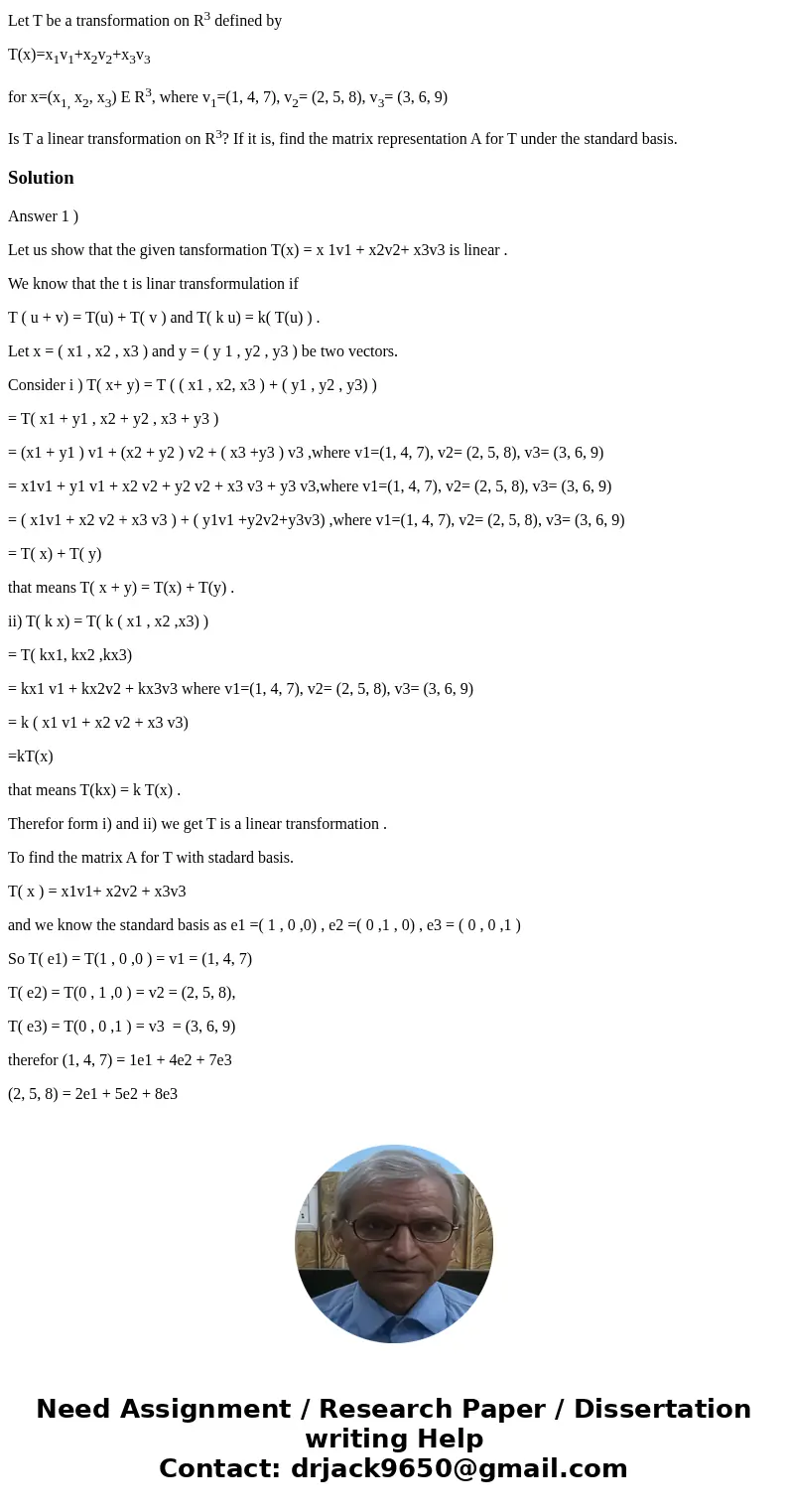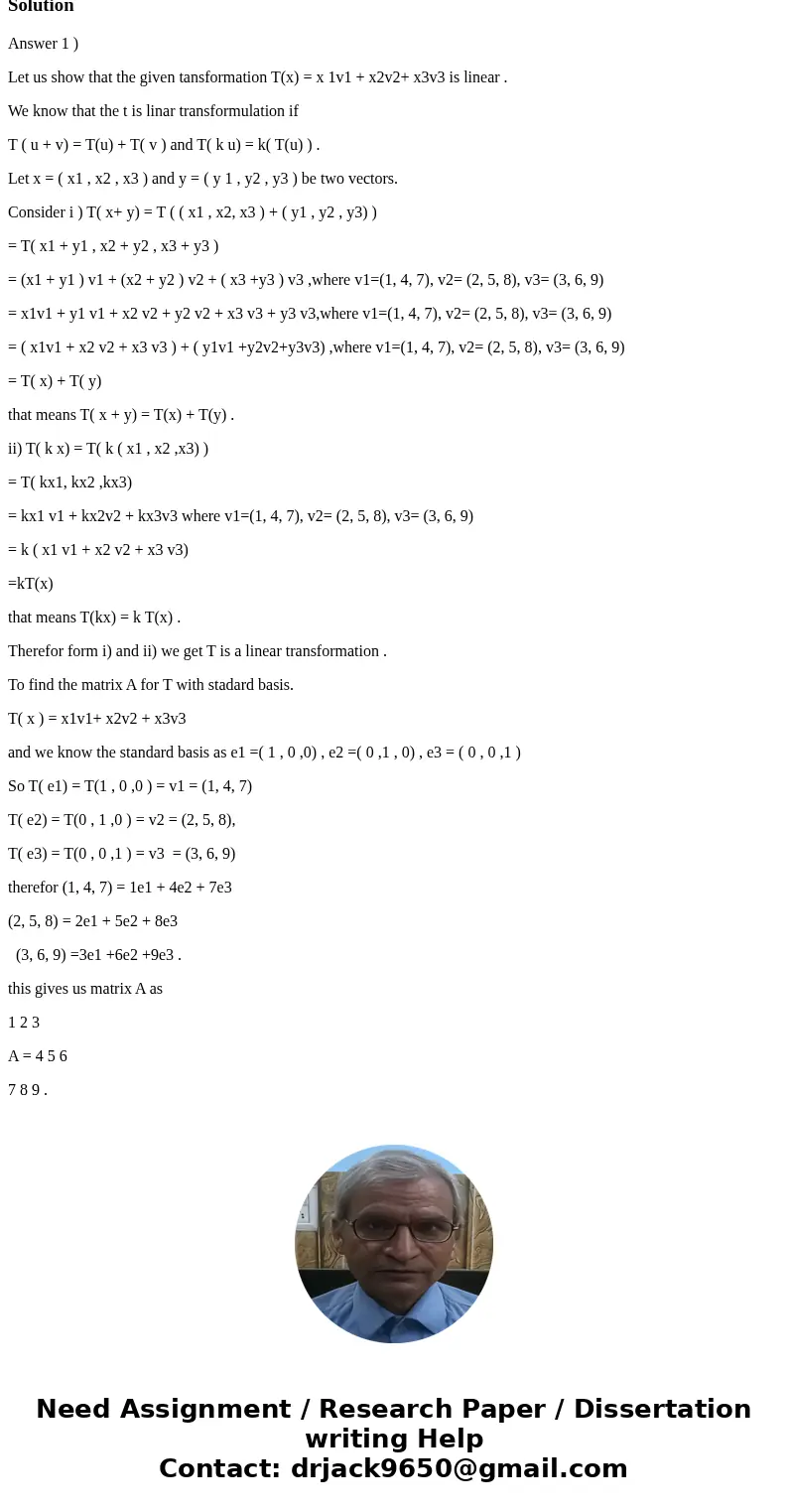Let T be a transformation on R3 defined by Txx1v1x2v2x3v3 fo
Let T be a transformation on R3 defined by
T(x)=x1v1+x2v2+x3v3
for x=(x1, x2, x3) E R3, where v1=(1, 4, 7), v2= (2, 5, 8), v3= (3, 6, 9)
Is T a linear transformation on R3? If it is, find the matrix representation A for T under the standard basis.
Solution
Answer 1 )
Let us show that the given tansformation T(x) = x 1v1 + x2v2+ x3v3 is linear .
We know that the t is linar transformulation if
T ( u + v) = T(u) + T( v ) and T( k u) = k( T(u) ) .
Let x = ( x1 , x2 , x3 ) and y = ( y 1 , y2 , y3 ) be two vectors.
Consider i ) T( x+ y) = T ( ( x1 , x2, x3 ) + ( y1 , y2 , y3) )
= T( x1 + y1 , x2 + y2 , x3 + y3 )
= (x1 + y1 ) v1 + (x2 + y2 ) v2 + ( x3 +y3 ) v3 ,where v1=(1, 4, 7), v2= (2, 5, 8), v3= (3, 6, 9)
= x1v1 + y1 v1 + x2 v2 + y2 v2 + x3 v3 + y3 v3,where v1=(1, 4, 7), v2= (2, 5, 8), v3= (3, 6, 9)
= ( x1v1 + x2 v2 + x3 v3 ) + ( y1v1 +y2v2+y3v3) ,where v1=(1, 4, 7), v2= (2, 5, 8), v3= (3, 6, 9)
= T( x) + T( y)
that means T( x + y) = T(x) + T(y) .
ii) T( k x) = T( k ( x1 , x2 ,x3) )
= T( kx1, kx2 ,kx3)
= kx1 v1 + kx2v2 + kx3v3 where v1=(1, 4, 7), v2= (2, 5, 8), v3= (3, 6, 9)
= k ( x1 v1 + x2 v2 + x3 v3)
=kT(x)
that means T(kx) = k T(x) .
Therefor form i) and ii) we get T is a linear transformation .
To find the matrix A for T with stadard basis.
T( x ) = x1v1+ x2v2 + x3v3
and we know the standard basis as e1 =( 1 , 0 ,0) , e2 =( 0 ,1 , 0) , e3 = ( 0 , 0 ,1 )
So T( e1) = T(1 , 0 ,0 ) = v1 = (1, 4, 7)
T( e2) = T(0 , 1 ,0 ) = v2 = (2, 5, 8),
T( e3) = T(0 , 0 ,1 ) = v3 = (3, 6, 9)
therefor (1, 4, 7) = 1e1 + 4e2 + 7e3
(2, 5, 8) = 2e1 + 5e2 + 8e3
(3, 6, 9) =3e1 +6e2 +9e3 .
this gives us matrix A as
1 2 3
A = 4 5 6
7 8 9 .


 Homework Sourse
Homework Sourse